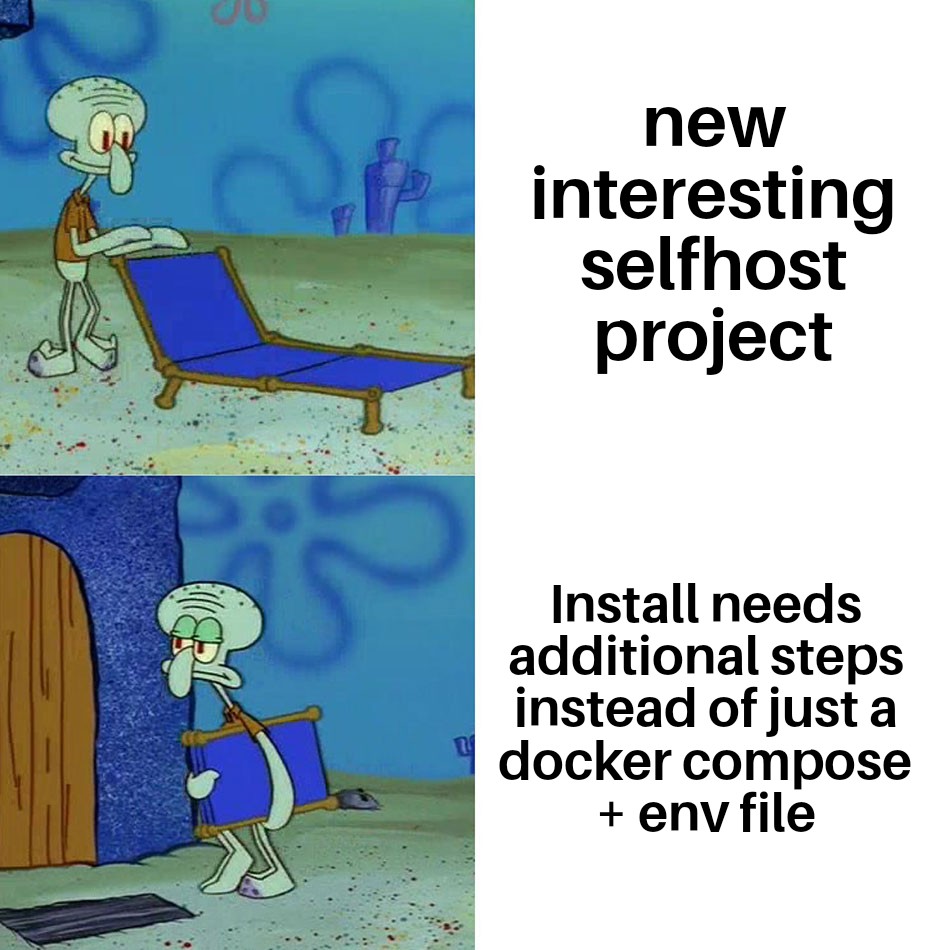this post was submitted on 03 Feb 2024
605 points (95.5% liked)
linuxmemes
21304 readers
1059 users here now
Hint: :q!
Sister communities:
- LemmyMemes: Memes
- LemmyShitpost: Anything and everything goes.
- RISA: Star Trek memes and shitposts
Community rules (click to expand)
1. Follow the site-wide rules
- Instance-wide TOS: https://legal.lemmy.world/tos/
- Lemmy code of conduct: https://join-lemmy.org/docs/code_of_conduct.html
2. Be civil
- Understand the difference between a joke and an insult.
- Do not harrass or attack members of the community for any reason.
- Leave remarks of "peasantry" to the PCMR community. If you dislike an OS/service/application, attack the thing you dislike, not the individuals who use it. Some people may not have a choice.
- Bigotry will not be tolerated.
- These rules are somewhat loosened when the subject is a public figure. Still, do not attack their person or incite harrassment.
3. Post Linux-related content
- Including Unix and BSD.
- Non-Linux content is acceptable as long as it makes a reference to Linux. For example, the poorly made mockery of
sudoin Windows. - No porn. Even if you watch it on a Linux machine.
4. No recent reposts
- Everybody uses Arch btw, can't quit Vim, and wants to interject for a moment. You can stop now.
Please report posts and comments that break these rules!
Important: never execute code or follow advice that you don't understand or can't verify, especially here. The word of the day is credibility. This is a meme community -- even the most helpful comments might just be shitposts that can damage your system. Be aware, be smart, don't fork-bomb your computer.
founded 1 year ago
MODERATORS
you are viewing a single comment's thread
view the rest of the comments
view the rest of the comments

Sorry but IMO that’s FUD.
The reliance on it legitimately prevents the issues that it’s likely to cause. It’s made to be both idempotent and ephemeral.
Give an example of a Python project. You make a venv and do all your work in there. You then generate a requirements with all the versions pinned. You start build a container on a pinned version of alpine, or Ubuntu, or w/e. Wherever possible, you are pinning versions.
With best practices applied, result is that the image will be functionally the same regardless of what system builds it, though normally it gets built and stored on a registry like Docker Hub.
The only chance a user has to screw things up is in setting environment variables. That’s no different than ever before. At least now, they don’t have to worry about system or language-level dependencies introducing a breaking change.